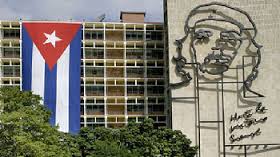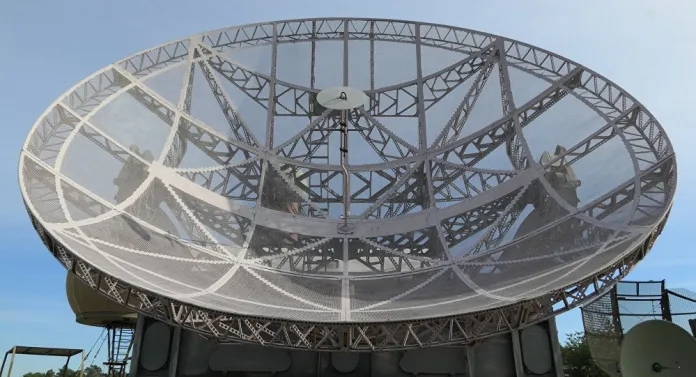
Headquarters of Cuba’s dreaded Ministry of the Interior (MININT) [Photo — Havana Times]
Havana long ago earned the nickname “Intelligence Trafficker to the World” for its sale and barter of stolen US secrets. Following the breakup of the Soviet Union and the loss of Moscow’s $3 billion annual subsidy, Cuba’s auctioning of US classified information skyrocketed. Defectors and émigrés report the island’s leadership sees America’s secrets as a commodity to be sold or traded to the highest bidder. These sources say Cuba’s intelligence brokering is now a key revenue stream, earning hundreds of millions of dollars annually in cash, goods, and services for the regime.
Cuba’s intelligence and security services are undoubtedly celebrating the legacy-making breakthrough in US-Cuban relations ordered by President Obama. The US leader’s intentions – while noble – will be undercut by five apparently unanticipated consequences that will trigger an increase in Havana’s targeting of the United States.
First, opening Cuba to American travelers will bring a huge influx of desperately needed cash to Cuban coffers – more specifically, the intelligence and security services that – along with their military brethren – run every major component of the tourism industry as profit-making enterprises.
Second, an estimated million Americans are expected to visit Cuba yearly, as compared to the 60,000 US tourists it currently enjoys. This endless parade of Americans will provide Cuban spies unprecedented opportunities to assess and recruit new American traitors.
Third, unrestricted access to US technology will allow Havana significant upgrades in the technical aspects of espionage and internal repression. While it may seem counterintuitive, Fidel and Raul Castro have long viewed the Cuban people as the greatest threat to regime survival. This explains why their two counterintelligence entities remain Cuba’s largest spy services. Conversely, the island’s three “foreign intelligence” services are directed against a single target – the United States.
The fourth benefit Cuba receives is a huge enhancement in the long-cultivated notion that it poses “no threat” to the US. Spying against an unsuspecting enemy is infinitely easier than operating against a suspicious one. That’s the reason this well-choreographed myth has been aggressively promoted by major Cuban spies like Ana Montes and the husband-wife team of Kendall and Gwen Myers, as well as countless Castro apologists. The boost President Obama gave Havana with his new initiative elevates this myth to heights Havana could not have achieved by itself.
The fifth and final gain will be the end of travel restrictions on Cuba’s US-based diplomat-spies, whose unrestricted travel is currently limited to a 25 miles radius from Washington DC and New York City. Open travel throughout the nation will be a godsend to Cuba’s espionage operations. This new advantage will eventually be enhanced even further by the opening of Cuban diplomatic consulates and Prensa Latina news agencies from coast to coast.
The combination of cash, US tourists, American technology, new diplomatic facilities and unrestricted freedom to travel will markedly improve the effectiveness and efficiency of Havana’s intelligence trafficking. In turn, this further incentivizes the regime to use this opportunity to drive up the profit margins and sales of US government and corporate secrets.
A crown jewel in Havana’s intelligence arsenal is its network of communications intercept sites headquartered at Bejucal. This facility — Cuba’s equivalent to NSA — is the only “signals intelligence” site in the downlink of almost every US satellite. This gives Havana a unique competitive advantage the intelligence services of China, Russia, and Iran can only dream about. Several well-placed defectors said the volume of Pentagon, White House, NASA, and other US communications collected by Bejucal is so vast Cuba only had staffing to process the crème de la crème of stolen secrets. When the Castro brother’s pair this daily flood of material with the information and insights contributed by hundreds of human spies serving covertly throughout the US, the result is a terrifyingly real danger to the United States.
Cuba is not a benign nation, but rather a hostile dictatorship that poses a significant, albeit one-dimensional threat to the United States. For example, the Castro regime has warned America’s enemies of every major military operation from the 1983 Grenada invasion through the most recent intervention in Iraq. Its spying has also resulted in the deaths of America citizens.
Cuba is a police state and its apparatchiks respect one thing: power. As such, its spy services will see Washington’s olive branch as a sign of weakness. They will declare “open season” on the American government, its businesses, and Americans themselves to enrich and maintain the regime to which they have sworn their lives, loyalties, and families’ futures.








![The former Russian listening station at Lourdes some 20 miles south of Havana is seen in this December 2000. It was mothballed a year later but could reopen, it is reported. [Courtesy: The (London) Daily Mail]](https://cubaconfidential.files.wordpress.com/2014/07/russian_listening_station.jpg?w=300)
